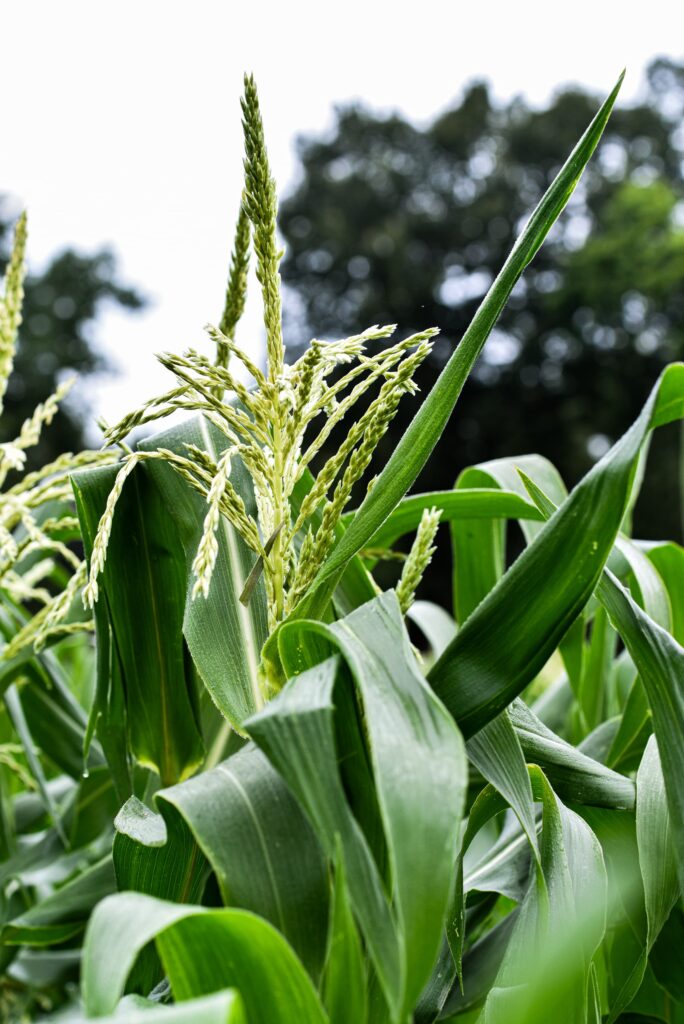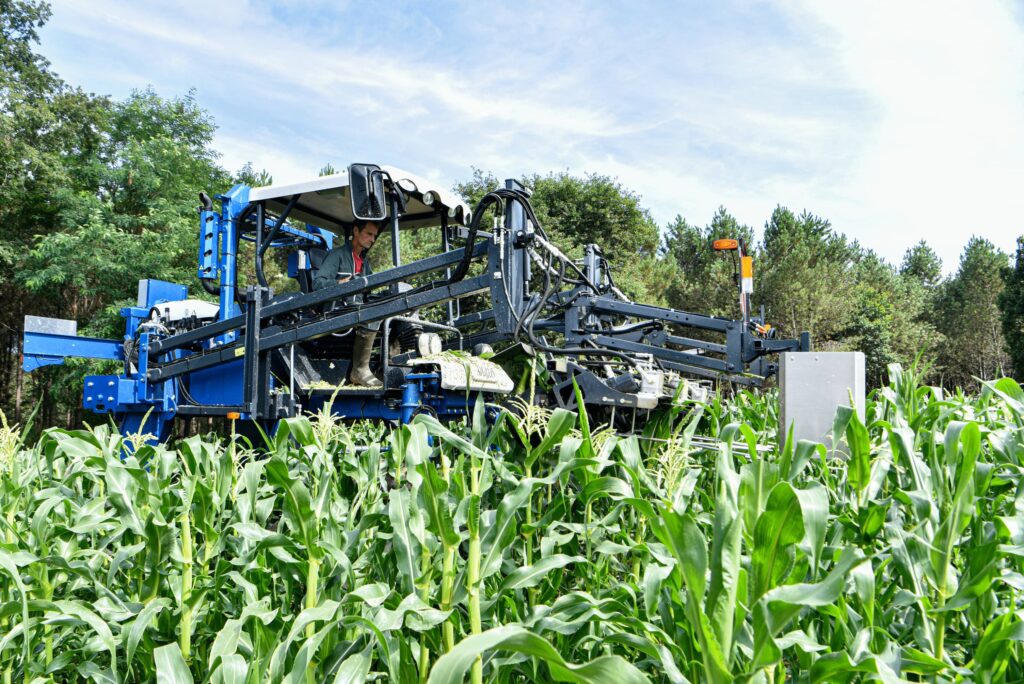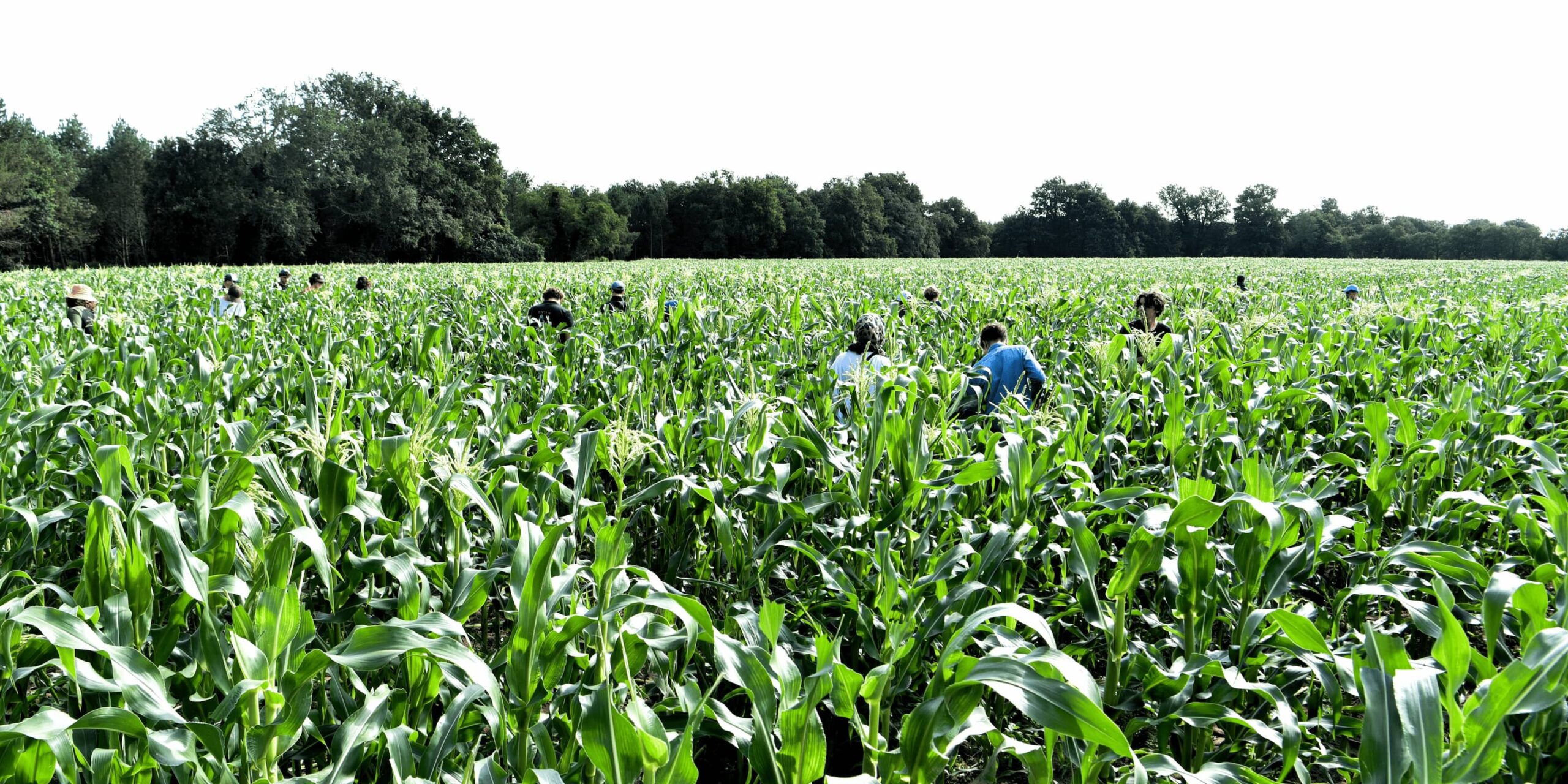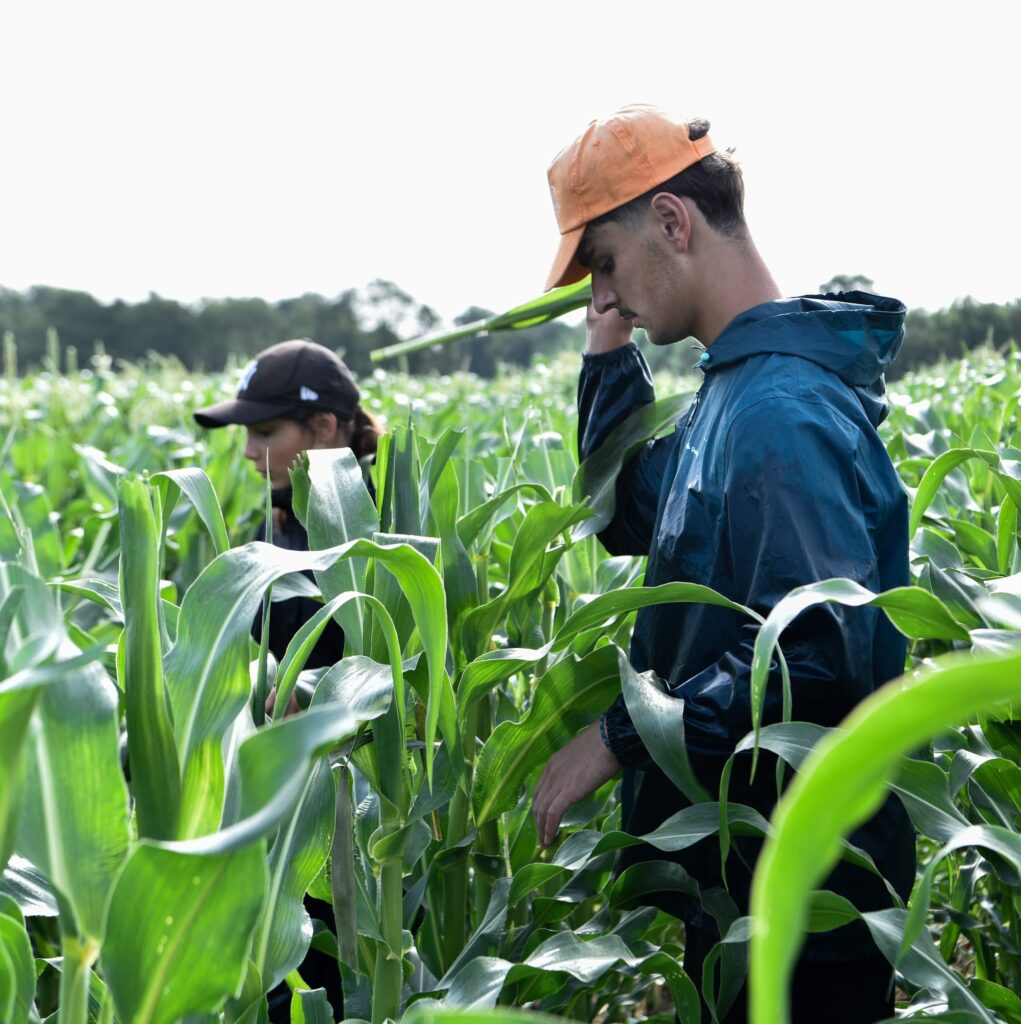The summer season is synonymous with corn castration for many farmers and young people alike.
What does this popular summer job involve?
Discover this work in Brocas (France) on the farm of Jean-Luc Blanc-Simon, vice-president of Maïsadour.
BEFORE ASKING HOW CORN SHOULD BE CASTRATED, IT’S IMPORTANT TO UNDERSTAND WHY.

Not all corn varieties can be castrated: only seed corn* is concerned. Seed corn is grown to cross 2 varieties (sown next to each other in the same field) so that they combine their best assets through reproduction. This requires castration of the reproductive part (the flower at the top) of one of the varieties, so that it doesn’t reproduce on its own as it could.
Corn is both male and female: it is said to be monoecious (as is asparagus and kiwi). The male part, the panicle, is located at the very top of the stalk, and the female part on the cob. The corn panicle produces pollen, which enables the corn not only to pollinate itself, but also to pollinate neighboring corn plants.
Seed corn fields are therefore sown in such a way that the corn plants that will retain their male assets are separated by a few rows by female corn plants: it is these female corn plants that will be castrated.
* There are also grain, forage and sweet corn varieties. To find out more, visit the Intercéréales website (in french).
Let's get practical!
At Jean-Luc Blanc-Simon, the first pass is made with a mechanical caster. This machine cuts the flowers at the top of the corn stalk (the height of the knives is controlled manually along the furrow) and removes, as far as possible, the rest of the panicle on the stalk, thanks to tires located behind the knives.

However, the machine will never replace the human, and to obtain quality purity (of female/male crosses), it is imperative to complete the process with manual castration, in order to remove any trace of male elements that may develop.
You have to be very reactive when the male is in flower. We can't take the risk of him pollinating the females, so when the time comes, we're 100% focused on this. I can't be available for anything else. It falls between the middle or end of July and the beginning of August. You have to be rigorous, because we're checked every day, and purity (quality) is just as important as future yield.
Jean-Luc Blanc-Simon
It’s during this short period that the young people of the commune of Brocas meet up to shuck, tirelessly, the female corn stalks.

This season, there are 25 of them!
These young people know each other, they’re all the same age or close to it. They’re here early in the morning, to avoid the oppressive heat of summer afternoons. For some, it’s the first time; others have already come last year, or even the year before.
However, whether experienced or novice, there’s always a first stage of explanation before entering the field: understanding how the plant works, then why and how it should be castrated.
Pedagogy is important: it helps people understand why they need to do these things, and what’s at stake.

The atmosphere is great! Between the stunned rows, we joke, talk about the previous evening, the next sporting season and life in the future. Time flies when conditions are right, and by 10 o’clock it’s already time for a welcome break.

“They come until they’re 17, and for two or three years. After that, they leave to try other jobs. When word of mouth isn’t enough, we call on the employers’ group to find manpower, but it’s a pleasure to have young people I know well with me.”
And indeed, the farm manager knows them pretty well, since two of the group are a little taller than the others: his son and his nephew, both students, who have come to lend a hand during this very special period.
They also supervise the younger group, allowing Jean-Luc Blanc-Simon to perform other tasks while keeping an eye on the teenagers. “At my place, the youngsters work well, and I have to hurry up and pass the strimmer if I don’t want them to get to the rows before me“, he enthuses. When the machine comes to a halt, Jean-Luc climbs down to join the rest of the group and finish off by hand in this happy, friendly atmosphere, which makes everyone want to come back!

Would you like to know more about the job of a castrator? This short video produced by AGPM may help!
